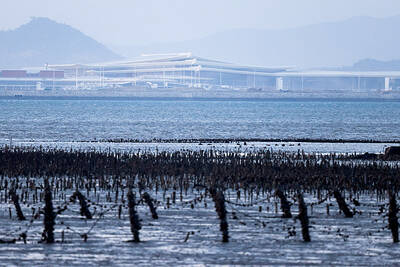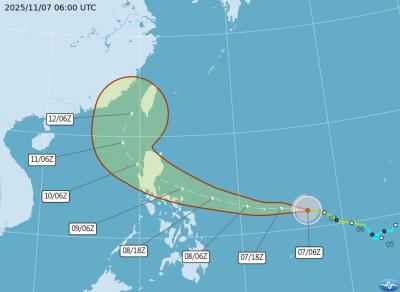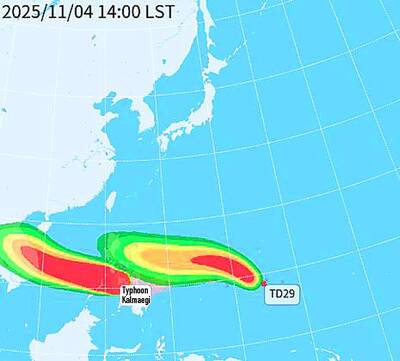Renewed talk of building a bridge to connect Kinmen Island with China’s port city of Xiamen has put the sparsely populated island county in the spotlight as it fights to promote a project that seems to have little if any support from the central government or the opposition.
Local media reported on Thursday that President Ma Ying-jeou (馬英九) had given the order to start the project, but Presidential Spokesman Wang Yu-chi (王郁琦) clarified that Ma had simply asked about the progress of a feasibility assessment on building the bridge.
A Cabinet spokesman later said there was no timetable to complete the feasibility study, a clear indication the government is in no rush to move forward on the ambitious project.
The Democratic Progressive Party opposes the idea, branding it as a step toward unification with China. Even Chinese Nationalist Party (KMT) legislators worry the bridge’s construction would divert local taxpayer funds to help China develop Xiamen.
Yet Kinmen residents want their island, a former front line against China, to be transformed into a new frontier for peace by building a road link to China.
Support for the project, called the Jindeng Bridge (金嶝大橋), is especially strong among those over 60 who experienced the month-long artillery bombardment of the island by the Chinese army in 1958 that killed more than 600 servicemen and civilians and injured more than 2,600.
Most of those now dream of “driving a car from Kinmen to Xiamen in a day,” said Yen Chung-cheng (顏忠誠), a Kinmen native who once served as a vice commander-in-chief of the Republic of China Army.
During his stint as Taiwan’s Fujian governor, a now-defunct position once responsible for Kinmen and Matsu, Yen listed the building of a bridge connecting Kinmen and Xiamen as one of the three major “projects of hope” in the region.
A public opinion poll conducted by the National Kinmen Institute of Technology in April 2007 found building a bridge to Xiamen was the issue of second-greatest concern to the county’s residents, trailing only the need for improved health and emergency care.
The 83.9 percent of respondents who felt it was an important issue believed it was necessary to cement ties with China, around which many of the lives of the 50,000 people who reside in Kinmen revolve.
Kinmen County Commissioner Lee Chu-feng (李炷烽) is firmly behind the project, saying Kinmen has served as a bridge connecting the two sides of the Taiwan Strait since direct ferry services to Xiamen and other Chinese ports were launched in early 2001.
“The building of the Jindeng Bridge will not only help hone Taiwan’s bridge building technologies, it will also help boost development in Kinmen itself,” Lee said. “The Jindeng Bridge will facilitate the building of water pipes and electricity transmission cables between Kinmen and Xiamen, allowing Kinmen to import fresh water and electricity from China — moves that would also manifest Taiwan’s sincerity in pursuing peace and co-prosperity with China.”
The Kinmen County Government said 974,000 people traveled between Kinmen and Xiamen last year, up from the 21,000 who used the ferry service in its inaugural year, an indication, it says, of the county’s crucial role as a gateway to China.
Yet that role has been threatened since direct air and sea links were opened between Taiwan and China last December, prompting Kinmen residents to seek further breakthroughs in its ties with China, particularly Xiamen, Kinmen County Council Speaker Hsieh Yi-chang (謝宜璋) said.
Lee said the Kinmen County Government began studying the possibility of building of a bridge between Kinmen and Xiamen in 2004 and has since proposed three different projects.
Plan A is a 10.3km bridge that would connect Wulongshan (五龍山) in Kinmen, to Jiaoyu (角嶼) and Xiaodeng islets (小嶝嶼) and on to Dadeng Island (大嶝島), which sits west-northwest of Xiamen Island and northeast of Kinmen.
Plan B, the Jindeng Bridge plan, would span 8.6km and directly connect Wulongshan and Dadeng Island.
Plan C is a 11.4km bridge between Wulongshan and Fujian Province’s Lianhe, which lies further north of Xiamen.
The costs of the three plans range from NT$12.7 billion (US$377.98 million) to NT$16.6 billion, Lee said.
Lee said Kinmen County prefers the second option because it is the most direct and the least costly.
If the bridge were built, it would take less than 30 minutes to drive from Kinmen to the island on which the center of Xiamen lies, by way of Dadeng, a land bridge to Xiangan north of Xiamen and then a tunnel currently under construction from Xiangan to Xiamen, Hsieh said.
A bridge would further tie the Taiwanese island to the major Chinese port city.
An increasing number of Kinmen youths have also chosen to attend schools in Xiamen rather than traveling to Taiwan proper for studies after the ferry service was opened.
Moreover, as their children went to Xiamen to get an education, parents in Kinmen began to purchase houses or invest in real estate in Xiamen.
Hsieh says the bridge would turn Kinmen into a Xiamen suburb, giving Kinmen residents more convenient links to the big city.
“A genuine one-day traffic zone between Kinmen and Xiamen would be created,” Hsieh said.

UNILATERAL MOVES: Officials have raised concerns that Beijing could try to exert economic control over Kinmen in a key development plan next year The Civil Aviation Administration (CAA) yesterday said that China has so far failed to provide any information about a new airport expected to open next year that is less than 10km from a Taiwanese airport, raising flight safety concerns. Xiamen Xiangan International Airport is only about 3km at its closest point from the islands in Kinmen County — the scene of on-off fighting during the Cold War — and construction work can be seen and heard clearly from the Taiwan side. In a written statement sent to Reuters, the CAA said that airports close to each other need detailed advanced

Tropical Storm Fung-Wong would likely strengthen into a typhoon later today as it continues moving westward across the Pacific before heading in Taiwan’s direction next week, the Central Weather Administration (CWA) said. As of 8am, Fung-Wong was about 2,190km east-southeast of Cape Oluanpi (鵝鑾鼻), Taiwan’s southernmost point, moving westward at 25kph and possibly accelerating to 31kph, CWA data showed. The tropical storm is currently over waters east of the Philippines and still far from Taiwan, CWA forecaster Tseng Chao-cheng (曾昭誠) said, adding that it could likely strengthen into a typhoon later in the day. It is forecast to reach the South China Sea

Almost a quarter of volunteer soldiers who signed up from 2021 to last year have sought early discharge, the Legislative Yuan’s Budget Center said in a report. The report said that 12,884 of 52,674 people who volunteered in the period had sought an early exit from the military, returning NT$895.96 million (US$28.86 million) to the government. In 2021, there was a 105.34 percent rise in the volunteer recruitment rate, but the number has steadily declined since then, missing recruitment targets, the Chinese-language United Daily News said, citing the report. In 2021, only 521 volunteers dropped out of the military, the report said, citing

WEATHER Typhoon forming: CWA A tropical depression is expected to form into a typhoon as early as today, the Central Weather Administration (CWA) said yesterday, adding that the storm’s path remains uncertain. Before the weekend, it would move toward the Philippines, the agency said. Some time around Monday next week, it might reach a turning point, either veering north toward waters east of Taiwan or continuing westward across the Philippines, the CWA said. Meanwhile, the eye of Typhoon Kalmaegi was 1,310km south-southeast of Oluanpi (鵝鑾鼻), Taiwan’s southernmost point, as of 2am yesterday, it said. The storm is forecast to move through central